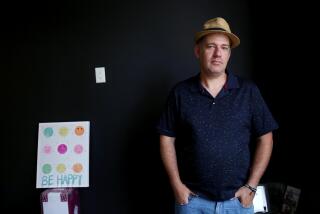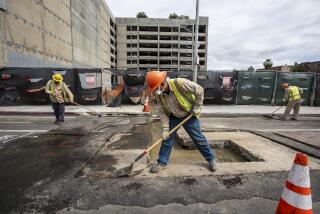Column: On Wednesday, his leg was amputated. On Thursday, he was back at work with the homeless
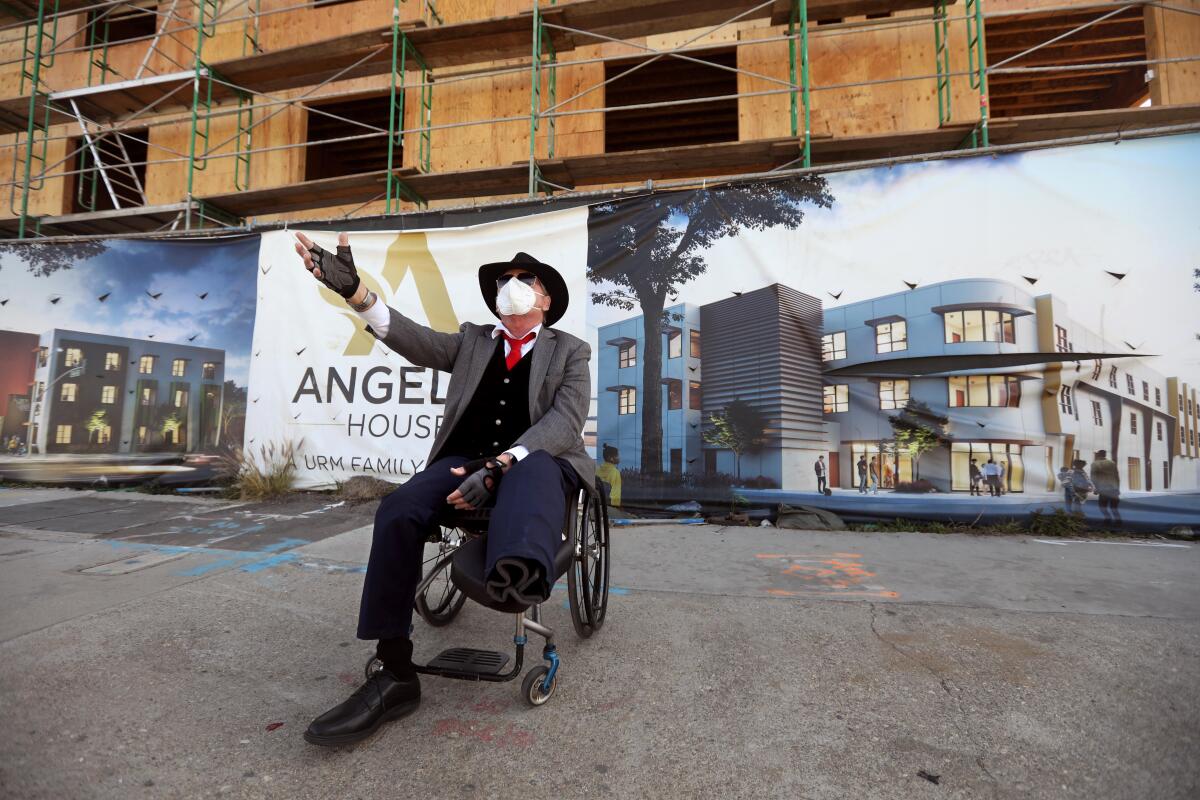
Those who really know the Rev. Andy Bales, chief executive of the Union Rescue Mission on skid row, have come to accept that there are certain things you can’t tell him.
He doesn’t like to take it easy, despite chronic health problems. And he doesn’t like the concept of medical leave.
“He’s just go, go, go, go, go, all the time,” says Kitty Davis-Walker, one of the mission’s administrators.
But Bales’ colleagues were hoping that now he’d finally heed their warnings. He was having his left leg amputated at mid-shin, several years after an identical amputation of his right leg.
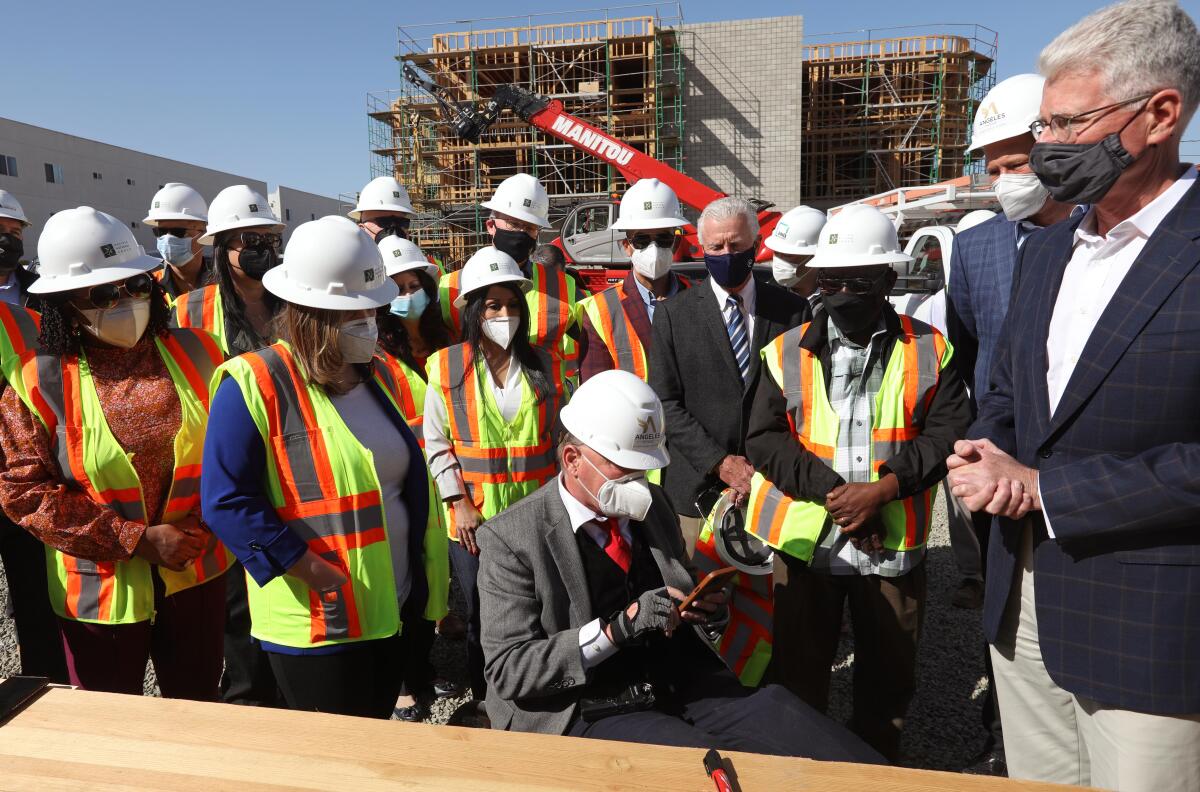
Early Wednesday morning, Bales checked into a Glendale hospital and went into surgery.
“It was off by 10:30,” he said of his left leg, “and I was home by noon.”
He went home?
Yes, Bales told me when I checked in on him.
Is that normal?
Probably not, Bales said, but this was a big week for the Union Rescue Mission and he had work to do. A ceremony was planned for Thursday morning, the day after surgery, at 132nd Street and South Avalon Boulevard in Willowbrook.
An 86-unit apartment building is under construction there, and Bales plans to open the doors later this year. Angeles House will have 374 beds for struggling and homeless families, and on-site day care, counseling, employment assistance and medical care.
And it’s being financed almost entirely without public funding, relying instead on donations from Rescue Mission corporate sponsors, individuals and nonprofits. The price per unit is just under $100,000, said Bales, a fraction of the going rate for projects built with public money in the last few years. Bales isn’t shy about expressing his thoughts on the official response to homelessness by public officials.
“We’re in the worst place we’ve ever been in,” Bales said. He predicted that homelessness will rise significantly in coming months, despite the billions already spent. And he noted the rising death toll of homeless people.
“Whatever the city or county or mayor tell you they’re doing,” Bales said, the reality on the streets tells you we’re losing ground.
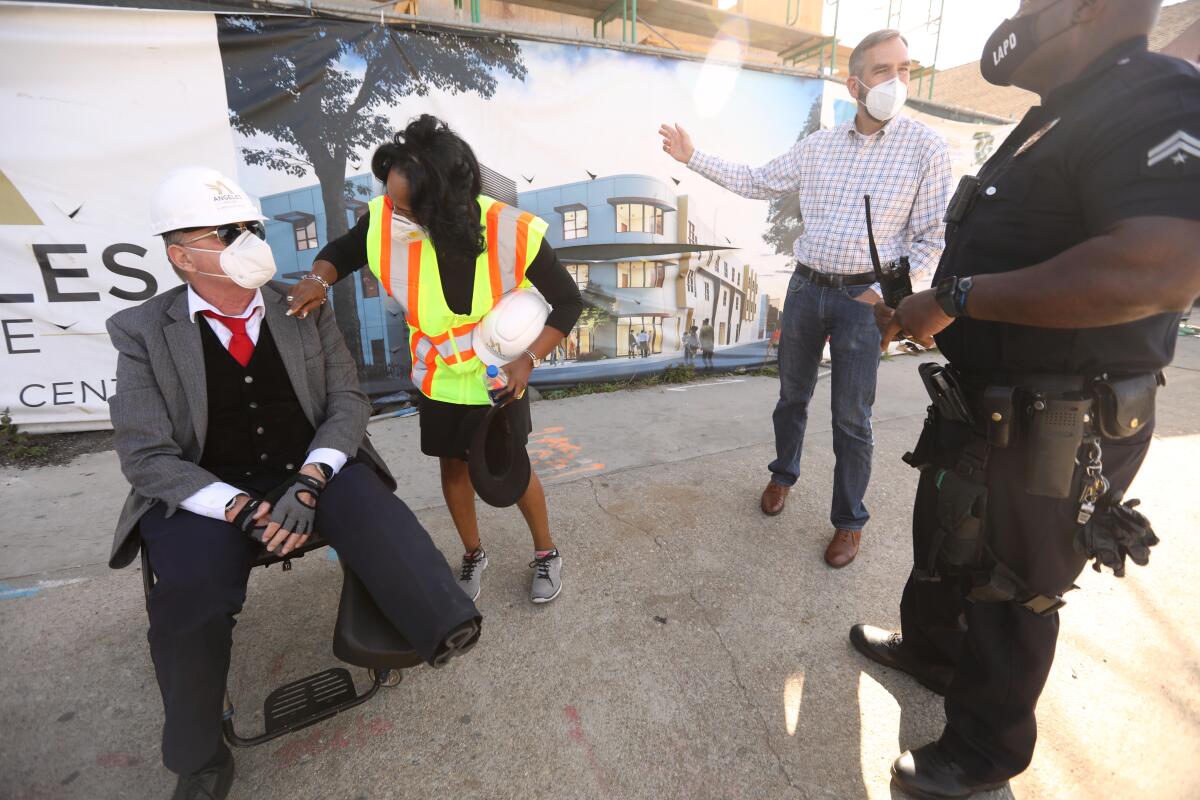
On Thursday morning, roughly 24 hours after surgery, Bales was in his wheelchair at the construction site. He wore a snappy black fedora and a ruby red necktie, and he happily greeted mission board members and community leaders. He told me he was on painkillers, and he lifted the hem of his gray sport coat to reveal a device that was capturing the fluids draining from his surgical wound.
“If you have a child, you are welcome here,” he said of the apartment building before him.
Nothing breaks Bales’ heart like the sight of homeless children, especially when they land on skid row. A lot of those kids are from South L.A., Bales said, and his long-term goal is to grow and decentralize his operation, building several more apartment houses just like this one. They’d all be called Angeles House, and the idea would be to give families an option closer to where they’re from, without all the problems associated with skid row.
“This is a great thing for the people who are on our streets,” said Pastor Winston Thompson of Greater Pearl of Faith Baptist Church, which is next door to Angeles House.
There was virtually no neighborhood pushback on this project, Bales said, a stark contrast to political and neighborhood opposition nearly 15 years ago when he struggled to open Hope Gardens in Sylmar. That facility transferred dozens of women and their children out of skid row, offered life-rebuilding services and made college and job training available to all the women.
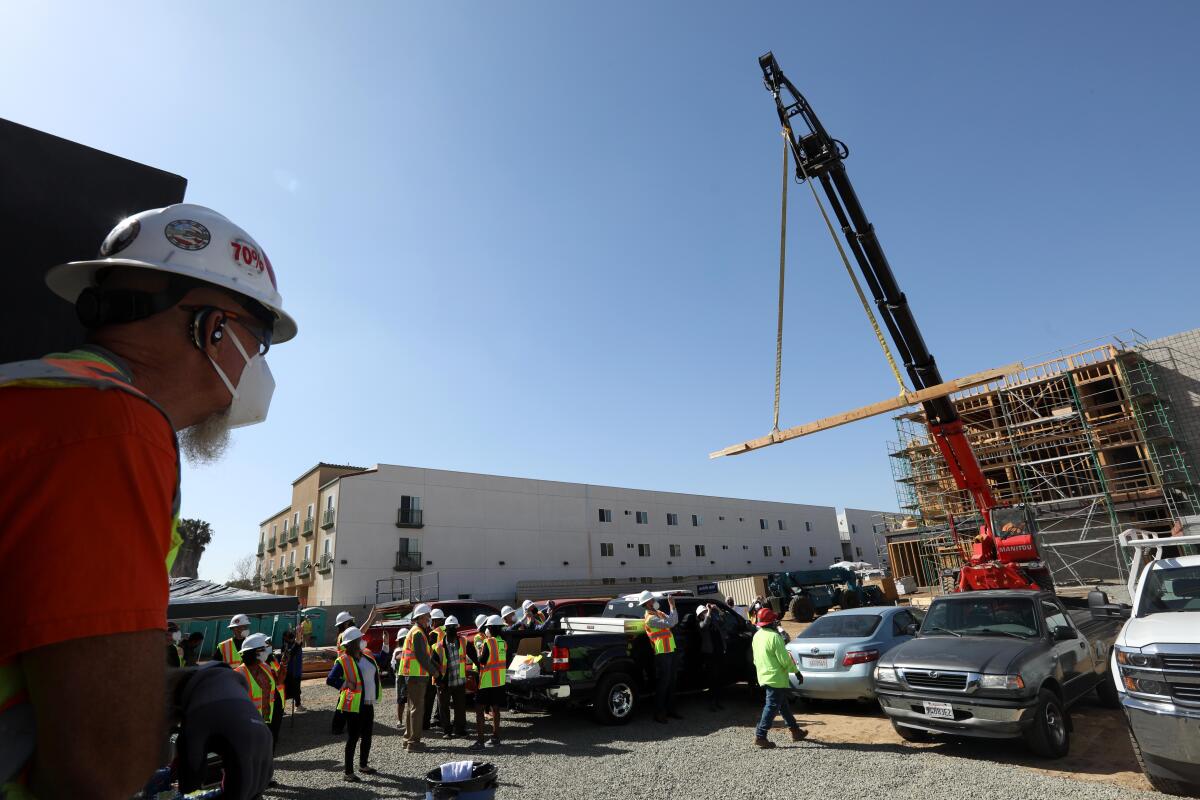
Bales wants to expand Hope Gardens in coming years, and one current resident, Serena Duran, is testament to the need. Duran told me she was homeless as a child, her mother was a drug addict, and her father wasn’t around. She fell into all the same patterns as an adult, was repeatedly assaulted and became desperate to break the cycle.
“I didn’t want my kids out there anymore,” said Duran, who was camped at a gas station in Mid-City and didn’t want to go to skid row, but a friend talked her into trying the Union Rescue Mission. She was later sent to Hope Gardens, and she told me she has been clean since April 20 of last year.
“I told myself to do the program, and do what I was asked to do. Open my ears, be quiet and just listen, stay still. I took it day by day and learned patience, and I prayed and got connected with God,” said Duran, who lives at Hope Gardens with two teenage boys, is trying to get custody of her other children and works for the county as a social services aide.
“My two teenagers, 16 and 15, love it here,” Duran said. “They joined the choir and made friends. I’ve never seen my kids so happy.”
The Union Rescue Mission model has some critics in the homeless advocacy community. Bales doesn’t buy into the prevailing “harm reduction model,” which avoids judgment or coercion when it comes to helping those with addiction issues. Others have issues with the Mission’s traditional model emphasizing emergency shelter services rather than long-term rehabilitation and supportive housing.
“I have enormous respect for Andy,” said Carol Sobel, a civil rights lawyer and homeless advocate who thinks L.A.’s biggest problem is lack of housing, and that more money should be plowed into that than into sheltering services.
“They’ve got huge open arms, but the result of that was a big COVID outbreak last year at Union Rescue Mission,” said Sobel, referring to 170 positive cases and four deaths among Union Rescue residents and staff.
But as Sobel concedes, Bales provides an important service. And his total commitment to serving the poorest, most neglected, abused and desperate people is undeniable.
“I pretty much don’t let them discourage me,” Bales said of critics. “I’ve just got to keep doing right.”
The point of the ceremony in Willowbrook on Thursday was to mark the progress of Angeles House. Bales read a passage from the Bible and joined others in signing a wooden beam that was to be hoisted to the top of the three-story building, and he threatened to climb atop the beam just before a crane hoisted it off the ground.
I wasn’t entirely sure he was kidding.
Later in the day, when Bales had returned home and we talked again by Zoom, he was fatigued and feeling some pain. He lost his right leg because of flesh-eating bacteria that he may have been exposed to on skid row. He said his left leg withered away from years of trying to support his weight on it.
He’s looking forward to getting his second prosthetic, Bales said, and recovering enough to continue his love of cycling with his wife, Bonnie, a nurse. They ride together on a tandem bike.
And of course, he’s planning a return to full-time work in the next couple of days.
Walker-Davis said that at times like this, she has tried to get his attention by saying, “Andrew Joel Bales,” because the middle-name treatment sometimes does the trick. And then she’ll say, “I care about you, my dearest brother, and I need you to heal and get well.”
But she admits this hasn’t had a high success rate.
“I have a high … pain tolerance and that’s good in my line of business,” Bales said, reminding me he’s had Type 1 diabetes for 48 years. “I look forward to going to work every day because of the walking miracles who work alongside me and reach out to people in need.”
More to Read
Sign up for Essential California
The most important California stories and recommendations in your inbox every morning.
You may occasionally receive promotional content from the Los Angeles Times.


